24 Nights / 25 Days
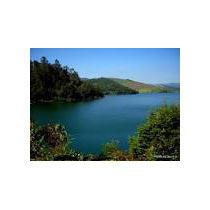
In the world’s largest democratic country - India, nature, tradition and history provide the most ideal setting for any meeting of minds. India can match any country in fulfilling the demands of international standard incentives. The country consists of hotels that not only rank among the best in the world but also provide excellent personalised services. As far as the themes and entertainment is concerned, India is unique where else one would be welcomed by a breathtaking stunning royal procession with rich caparisoned elephants, camels and lancers on horseback lining the way. Also one would stay in extravagant palaces that revive the gracious lifestyles of the Maharajas, discretely blending modern amenities or enable you to experience the majesty, pomp and pageantry of a Royal life style as you enjoy the royal sport of polo, or have one of the Seven Wonders of the World as a backdrop to a Mughal theme evening.
Lift the Veil - enter into the majesty and opulence of Maharajas whose dynasties ruled here for centuries. Festivities, entertainment and banquets punctuate a delightful tour where. Come let the people of India open their hearts to welcome you.Any airfare / train fare
Any entrance fees to the monuments which can pe paid direct on actual basis
Any meals mentioned other than mentioned above
Any expenses of personal nature
Any services mentioned other than above.
Mumbai a cosmopolitan metropolis, earlier known as Bombay, is the largest city in India and the capital of Maharashtra state. Mumbai was originally a conglomeration of seven islands on the Konkan coastline which over time were joined to form the island city of Bombay. The island was in turn joined with the neighbouring island of Salsette to form Greater Bombay. The city has an estimated metropolitan population of 21 million (2005), making it one of the world's most populous cities.
Mumbai is undoubtedly the commercial capital of India and is one of the predominant port cities in the country. Mumbai's nature as the most eclectic and cosmopolitan Indian city is symbolized in the presence of Bollywood within the city, the centre of the globally-influential Hindi film and TV industries. It is also home to India's largest slum population.
Rest of the day at leisure. Overnight stay at Hotel.
After breakfast full-day at leisure (vehicle not available on this day). Overnight stay at Hotel.
Today this morning you will be driven to Nashik for day trip.
Having many temples and pilgrimage sites, Nashik is known to be a holy city for Hindus in India. Nashik has always been the centre of commerce and trade in India since historical past. Many historic events of the Indian freedom struggle too had been occurred in this place. Ramkund, Muktidham Temple, Coin Museum and Pandavleni Caves are some of the important tourist sites of Nashik.
Nashik is developing as a lively city with a blend of the ancient and the modern touches. The city has numerous forts, temples, historic sites as well as a home for industries. Nashik is also popular for fruit and vegetable productions. Grapes, strawberries and onions are amongst the highest in the country.
Tourists can also organize trips to Shirdi, Trimbakeshwar, Dudhasagar Waterfalls, Saptashringi Devi Temple, Nandurmadhmeshwar, Bhandardara Jawhar and Nandur Madhameshwar Bird Sanctuary, which are not so far the city. Reaching Nashik too is so easy as the Nashik railway station is one of the major stations of the Central Railway. Nashik is 220 km away from Pune. Nearest airport is Mumbai or Pune with a distance of 175 km.
Evening back to Mumbai. Overnight stay at Hotel.
After breakfast full-day at leisure (vehicle not available on this day). Overnight stay at Hotel.
After breakfast you will be transferred to Airport to take flight for Varanasi. On arrival in Varanasi and you will be booked to stay in this ancient city for 02 nights.
Varanasi - Benares - Kaasi is considered to be the holiest of all pilgrimage sites in India. It is considered home to Shiva - Visweswara. Benares is also known as Kaasi because it is beleived that Supreme brilliance shines there, and lights the way to salvation (Kas - to shine). Varanasi is located between two rivers Varana and Asi, and hence the name Varanasi.
Hyuen Tsang, the Chinese traveller visited Varanasi in the 7th century. His travel accounts speak of the grandeur of the city and of its temples. This writer describes a hundred feet high statue of Shiva Maheshwara made of brass that adorned the city.
In the afternoon, visit the Sarnath Temple:
The great Buddha enhanced the sanctity of Varanasi by choosing the environs of the city to preach his first sermon at Sarnath, (only 10 kms away) after attaining enlightenment. Later, Ashoka, the great Mauryan Emperor erected magnificent stupas and other buildings along with his mighty stone pillar, Dharmarajika Stupa. The 110 ft. tall Damekh Stupa marks the place where Buddha preached first sermon. Sarnath has been a premier centre for Buddhism. It is a rich collection of ancient Buddhist relics and antiques comprising numerous Buddha and Bodhisatva images on display at the Archaeological Museum (1000 hrs to 1700 hrs. Open all days except Friday)
Life in the city of Varanasi revolves around its over one hundred Ghats (river landings). The River Ganga flows from north to south, and the city forms a circular shape from the Asi ghat in the south up to the confluence of the Varuna river with the Ganga. Thousands of pilgrims come to bathe and worship in the river at the first light of dawn. Boat rides down the river in the morning are a very popular excursion.
Experience the boat ride at sunrise. Return to the hotel for breakfast and later set out for a sightseeing trip around the city.
First visit the Vishwanath temple, one of India’s most important Shaivite shrines. The original temple is said to have been over 1000 years old. The Gyan Vapi tank enclosed in a hall is said to contain the original shivalingam. Pilgrims offer prayers here before embarking on the Panchatirtha.
Later visit the The Bharat Kala Bhavan museum inside the Benares Hindu University campus is open from Monday till Saturday. It has a valuable collection of miniature paintings, sculptures and bronzes. A special gallery has a 19th century map of the Raj Ghat excavations and old etchings of the city. Besides Hindu, Islamic and Buddhist artefacts, the works of contemporary artists like Jamini Roy, Nicholas Roerich and Alice Boner are displayed here.
After lunch, visit the Ramnagar, the fort palace of the Kashi Naresh (king of Kashi) is on the eastern bank of the Ganga, south of Asi Ghat. The palace has a museum with memorabilia such as horse-drawn carriages, motorcars, silver howdahs (elephant seats), palanquins, silk and brocade costumes, and various artifacts and trophies.
Late evening will be free for own activities such as shopping or walking around the busy streets of the city.
After breakfast you will be transferred to Airport to take flight for Hyderabad. On arrival in Hyderabad you will be booked to stay for 02 nights.
The city of smiles, of lights, of a thousand faces, endearingly called the Pearl City, Hyderabad offers a variety of tourist attractions ranging from Heritage monuments, Lakes and Parks, Gardens and Resorts, Museums to delectable cuisine and a delightful shopping experience. To the traveller, Hyderabad offers a fascinating panorama of the past, with a richly mixed cultural and historical tradition spanning 400 colourful years. Some of the tourist attractions include.
Afternoon enjoy a half-day tour of Hyderabad visiting The Charminar is as much the signature of Hyderabad as the Taj Mahal is of Agra or the Eiffel Tower is of Paris. Mohammed Quli Qutb Shah, the founder of Hyderabad, built Charminar in 1591 at the centre of the original city layout. It is said to be built as a charm to ward off a deadly epidemic raging at that time. Four graceful minarets soar to a height of 48.7 m above the ground. Charminar has 45 prayer spaces and a mosque in it. Visitors can view the architectural splendour inside the Charminar. The monument is illuminated in the evenings and a pedestrianisation project around the monument is under implementation.
Mecca Masjid: A two hundred yards southwest of the Charminar is the Mecca Masjid, so named because the bricks were brought from Mecca to build the central arch. The Qutb Shahis never finished the building of the mosque, which was completed by Aurangzeb in 1694.
Laad Baazar: This is famous, colourful shopping centre of the old city, tucked away in one of the streets leading off from Charminar. Bridal wear, Pearls and the traditional Hyderabadi glass and stone studded bangles are sold here.
Overnight stay at Hotel
After breakfast you will enjoy a half-day tour of Hyderabad
Golconda is one of the famous forts of India. The name originates from the Telugu words “Golla Konda” meaning “Shepherd’s Hill”. The origins of the fort can be traced back to the Yadava dynasty of Deogiri and the Kakatiyas of Warangal. Golconda was originally a mud fort, which passed to the Bahmani dynasty and later to the Qutb Shahis, who held it from 1518 to 1687 A.D. The first three Qutb Shahi kings rebuilt Golconda, over a span of 62 years. The fort is famous for its acoustics, palaces, ingenious water supply system and the famous Fateh Rahben gun, one of the cannons used in the last siege of Golconda by Aurangzeb, to whom the fort ultimately fell.
Qutb Shahi Tombs: The tombs of the legendary Qutb Shahi kings lie about a kilometre away from Banjara Darwaza of the Golconda Fort. Planned and built by the Qutb Shahis themselves, these tombs are said to be the oldest historical monuments in Hyderabad. They form a large group and stand on a raised platform. The tombs are built in Persian, Pathan and Hindu architectural styles using grey granite, with stucco ornamentation, the only one of its kind in the world where an entire dynasty has been buried at one place.
This museum houses one of the biggest one-man collections of antiques of the world by Mir Yousuf Ali Khan, Salar Jung III. The objects d’art include Persian carpets, Moghal miniatures, Chinese porcelain, Japanese lacquerware, famous statues including the Veiled Rebecca and Marguerite and Mephistopheles, a superb collection of jade, daggers belonging to Queen Noor Jahan and the Emperors Jahangir and Shah Jahan, Aurangzeb’s sword and many other fabulous items.
Overnight stay at Hotel.
After breakfast you will be driven to Bijapur for 02 nights stay.
The Bijapur city in Karnataka is a historical town that boats of rich heritage and culture. The history of Bijapur goes to the times of Kalyan Chalukya who ruled here during the 11th and 12th century. During this time the city was known as Vijayapura. In later part of the 13th century, the city like the rest of the India came under the rule of the Khilji Sultanate of Delhi.
The city came under the ruling of the Bahmani Sultans of Gulbarga in the year 1347 and it was then that the time was referred as ‘Vijaypur’ which later got malformed into ‘Bijapur’. Further in the year 1518, the Bahmani sultans splintered in to five and were known as the Deccan Sultans. Bijapur came into the hands of King Adil Shah Dynasty and was led by Yusuf Adil Shah. Most of the monuments that adorn Bijapur today were built during his reign. Aurangzeb captured the land of Bijapur in 1686, marking the end of the rule of Adil Shah Dynasty. However, British gained control of Bijapur along with Satara in 1848, after a fierce battle between Peshawa and the British. It remained so till independence, when it was declared a part of Bombay state. It the year 1956, the city of Bijapur was reassigned to the Mysore state which later came to known as Karnataka.
Rest of the day at leisure. Overnight stay at Hotel.
Post breakfast take a tour of Bijapur visiting Gol Gumbaz This is the second largest dome in the world and was built by Yaqut of Dabul, the renowned architect under the patronage of Mohammed Adil shah. The room is an architectural marvel. The dome has been erected without the help of any pillars. There are four minarets with stairs that lead to the dome from where a magnificent view of the town can be seen. The most unique feature of the structure is the whispering gallery. Even the tiniest of sounds get echoed several times in the gallery. It is a must see tourist spot and is 2 km away from Bijapur.
Ibrahim Rauza This is one of the best structures in the historic town of Aihole. Designed by Malik Sandal, the site comprises a mosque to the right and a tomb to the left. There is a huge ornamental entrance. The site contains the remains of the great Adil Shah ruler Ibrahim Adil Shah II and his wife. The mausoleum comprises a mosque and four minarets. It is said that the grandeur of this structure inspired the construction of Taj Mahal. A neatly maintained garden complements the beauty of the monument.
Jumma Masjid, There is a fountain at the center and a lot of well designed arches and rooms. There is a big hall and a huge dome with 33 domes surrounding it. There are 12 arches constructed with 12 interleaving arches. There is an elaborately designed gateway designed by Aurangzeb. It has the unique distinction of being one of the first mosques in India. The mosque contains a copy of the holy Koran inscribed in gold.
The Citadel, This is a centrally located site. The Citadel is surrounded by its own walls and there is a wide moat in the center of the premise. It has in its enclosure palaces, gardens and halls which belonged to the Adil shah rulers. It was built by Yusuf Adil shah. Most of the structures are dilapidated and some have been converted to government buildings but the unique charm of the place cannot be missed when you visit the place. The most famous structures in the enclosure are Gagan Mahal, which was the royal palace as well as a Durbar Hall, Sat Manzil, Jala Manzil and Bara Kaman.
Rest of the day at leisure. Overnight stay at Hotel.
After breakfast you will be driven to Badami for 02 nights stay.
Badami, is a small town in the Bagalkot District of Karnataka. Formerly known as Vatapi, it was the capital of the Badami Chalukyas. The town is noted for its several cave temples, carved out of rock in the sixth-seventh century AD. It is located in a ravine at the foot of a rugged, red sandstone outcrop that surrounds Agastya lake. Two of the hills in Badami represent the demons Vatapi and Ilvala. Badami was founded in 540 A.D. by Pulakesi I, an early ruler of the Chalukyas. His sons Kirthivarman and his brother Mangalesha I constructed the cave temples.
The rock-cut Badami Cave Temples represent the secular nature of the rulers then, with tolerance and a religious following that inclines towards Hinduism, Buddhism and Jainism. Cave 1 is devoted to Shiva, and Caves 2 and 3 are dedicated to Vishnu, whereas cave 4 displays reliefs of Jain Tirthankaras. For more details, visit wikipedia. One has to climb a flight of 2000 steps to reach the cave.
Overnight stay at Hotel.
Post breakfasf take a half-day tour of Badami
Cave Temples
Badami Cave Temples are group of 4 cave temples, carved out of a hill opposite Badami fort. of the four, three are Brahmanical, while the fourth is Jain. Almost 2000 steps have to be climbed to reach the cave.
These cave temples are just adjacent to the Bhutanatha tank where Nagamma, Siva & Vishnu shrines can also be seen. The first cave temple houses the Shiva manifested as the eighteen-armed Nataraja displaying remarkable 81 dance poses! The biggest and most enhancing is the third cave temple dedicated to Vishnu. Overlooking the cave temples is a reservoir dotted with temples dedicated to Vishnu and Shiva. Also a must are the Bhutanatha temples that lend their name to the lake beneath the cave temples.
Badami Fort
Perched on hill top about 2 km. from the town, the fort encompasses large granary, an underground chamber which must have served as a treasury or private audience hall, double fortification walls and many other architectural marvels. The fort also houses a carved temple raised on top of the northern end of the hill. Malegitti Shivalaya - one of the oldest temples in the region is dedicated to Lord Shiva. The temple is constructed out of stone on a summit of a rocky hill. It's a 4-hour journey from Bijapur and is connected by rail to Gadag, a convenient stop to get a connecting train to Hospet or Hubli.
Naganath Temple
Naganath Temple is one of the ancient Chalukyan temples dedicated to Lord Shiva. The temple lies amidst the green forest on the way to Mahakuta about 10-km from the Badami town, definitely worth a visit site.
Archaeological Museum
Archaeological Museum at Badami is known for some of its ancient specimens. Shiva's bull, "Nandi" at the entrance of the museum is its foremost attraction. The museum is nestling near the reservoir is worthwhile for the intellectuals. Timings: 0900 to 1700 hrs. This museum is closed on Fridays.
Overnight stay at Hotel.
After breakfast you will be driven to Hampi for 02 nights stay.
Hampi was the capital city of the powerful South Indian Vijayanagar Empire . Founded by Harihara and Bukka in 1336, it fell to the Muslim rulers of North India in 1565 after the disastrous battle of Talikota and subsequently lapsed into decline and abandonment. The ruins of the historical monuments have stood the ravages of man and time and still evoke memories of the grandeur of a bygone era. Set amidst an awesome boulder-strewn landscape along the banks of the Tungabhadra river, 12 km away from the sleepy town of Hospet in Bellary district, Hampi was the magnificent capital of the mighty Vijayanagar kingdom. "The city is such that the pupil of the eye has never seen a place like it, and the ear of intelligence has never been informed that there existed anything to equal it in the world," marvelled a 15th century
Persian ambassador. There were opulent palaces, marvellous temples, massive fortifications, baths, markets, aquaducts, pavilions, stables for royal elephants and elegantly carved pillars. This was a city whose merchants offered diamonds, pearls, fine silks, brocades, horses and according to one Portuguese visitor, "every sort of thing on earth." A visit to Hampi is a sojourn into the past. The best way to experience this World Heritage Site is to take a leisurely stroll through the eloquent ruins. Most of the important structures and ruins are located in two areas, which are generally referred to as the Royal Centre and the Sacred Centre. The Royal Centre in the southwest part of the site contains structures that seem to have been palaces, baths, pavilions, royal stables, and temples for ceremonial use. The Sacred Centre is situated on the northern edge of the city along the banks of the holy Tungabhadra river. The ruins of Hampi are extensive and fascinating enough to absorb your attention for several days. There is always something new to discover in Hampi. If you are in a hurry, a day or two will suffice to see all the important structures. Photography and archaeology buffs should plan on staying a little longer.
Overnight stay at Hotel.
Post breakfast take a full-fay tour of Hampi
Kadalekalu Ganesha: This is a giant statue of the elephant headed Hindu god Ganesha. This 14 feet tall sculpture carved in situ on the slops of the Hemakuta Hill. The tall slender granite pillars with many mythological themes carved decorated the front hall of this shrine. Kadalekalu means gram seed in local language. The shape of this statue was the reason for this witty name for a god's statue.
Sasivekalu Ganesha: This again is a giant statue of Ganesha located inside an open pavilion. The potbelly of the god is in the shape of mustard seed and hence the name (Sasivekalu means of mustard seed in the local language). This four handed god is a fine example of the Vijayanagara's artistic skills.
Virupaksha Temple: This temple dedicated to the Hindu god of destruction is located at a riverbank. Virupaksha temple is believed to be one of the oldest active temples (from 7th century AD) in India. This is a place equally sought-after by the tourists and the pilgrims. The temple complex consists of the god's sanctum, pillared halls and a series of giant entrance towers. This is one of the fine places to witness the Hindu religious functions in close proximity.
Krishna Temple: This temple is dedicated to lord Krishna, one of the ten incarnations of lord Vishnu. In Hindu mythology Krishna is known for his romantic encounters and political shrewdness! This temple was actually dedicated to the lord in his infant (crawling) form. The complex consists of the main shrine, shrines of the god
Krishna Temple: This temple is dedicated to lord Krishna, one of the ten incarnations of lord Vishnu. In Hindu mythology Krishna is known for his romantic encounters and political shrewdness! This temple was actually dedicated to the lord in his infant (crawling) form. The complex consists of the main shrine, shrines of the goddesses, the chariot/market street and the temple tank. The main hall spots a series of pillars carved with mythical rampant creatures
Lakshmi Narasimha: This 6.7 m giant monolithic statue of the man-lion god is the largest icon in Hampi. Narasimha which is one of the ten avatars (incarnation) of lord Vishnu is depicted in a cross-legged seated position. It's believed that the original image contained his consort Lakshmi sitting on his lap. This image was destroyed during the enemy invasion. Currently only a hand of the goddess resting on his waist can be seen.
Overnight stay at Hotel.
After breakfast you will be driven to Hassan for 02 nights stay.
Hassan is a city located in the Indian state of Karnataka which also houses the Indian Space Research Organisation’s master control facility. Spread over an area of 6814 square km, the origin of the city goes back to the 11th century. Channa Krishnappa Naik is credited with founding the city.
Hassan derives its name from Goddess Haasanamba, who is the main deity of the region. A temple is dedicated to the goddess by the name of Hasanamba Temple. The city was founded during the Hoysala Dynasty, which ruled the region from the 11th to the 14th century. During the peak in their reign, the Hoysalas ruled most of Southern India. Most of the kings in the early part of the Hoysala rule were of Jain faith, but historical findings suggest that they later shifted their faith to Shiva.
Overnight stay at Hotel.
Post breakfast take a tour of Hassan
Belur, which is an important tourist place in Hassan, was one of the first capitals of the Hoysala Kingdom. Belur in Hassan houses the Chennakesava Temple Complex, which consists of the Chennakesava Temple and the Kappe Chennigraya Temple which attracts a lot of pilgrims every year.
Another important pilgrim centre in Hassan is Shravanabelagola. It is one of the most important pilgrim sites for Jains in India. Shravanabelagola is at a distance of around 50 Km from Hassan. The name 'Shravanabelagola' means 'the land of pond'. The town has a pond and is situated between two lofty hills called Chandragiri and Indragiri. Shravanabelagola is famous for the gigantic statue of Lord Bahubali, which is the tallest monolithic statue in the world. The height of the statue is around 17 m. The image was installed by Chavundaraya in 988 AD, who was the minister of Ganga King Rachamalla Sathyavakya. It is almost impossible to find a structure so grand and imposing anywhere in the world. The statue is located on the top of Indragiri hill. There are many more temples in the town that are considered sacred by Jains.
Throughout the year, inflow of pilgrims to Shravanabelagola is good. However, during the Mahamastakabhisheka', the number of pilgrims rises immensely. Mahamastakabhisheka is a Jain festival that is held every 12 years. The festival was recently concluded in the year 2006 and is scheduled next in 2018. During the event, the huge statue of Lord Bahubali is bathed in milk, sugarcane juice and saffron paste. Flower petals, sandalwood powder and turmeric powder is offered by devotees. The most awaited part of the festival comes at the end when the statue is showered with flowers from a helicopter.
Overnight stay at Hotel.
After breakfast you will be driven to Mysore for 02 nights stay.
Mysore is a district of 6,269 sq kilometres in Karnataka, South India and it is connected to several surrounding parts of India by road and rail networks. The people of Mysore speak English, Tamil and Hindi. It is referred to as the City of Palaces and it is the second largest city of the Karnataka area. The weather in this place of the world is nice all year round but the best time to visit Mysore is from October to March as the temperature varies between 16°C to 27°C. However, if you really like the heat, note that the warmest time of the year is April. It is advisable to avoid the rainy reason. Mysore Tourism has been rising through the years as millions of tourists choose this cultural capital. The area was named after a demon king who the locals believe to have lived there. Tourists will enjoy a rich heritage and a large number of palaces and gardens. Sacred temples are scattered all over the area of Mysore and architecture gives a touch of charm to the place. The Mysore Palace was built in AD 897 and it is an imposing building, full of granite. The Chamundeshwari Temple can be visited on the Chatundi Hill and the local zoo will give you the opportunity to enjoy rare birds and animals. The local fairs and festivals are responsible for the rise in Mysore Tourism; the Dussehra festival in October and November fills the place up with music, colors and dances. There are plenty of sports events, exhibitions and competitions during these days. Do not forget to visit the St. Philomena's Church which is one of the largest churches in India. Admire rare paintings in the Shri Jayachamarajendra Art Gallery and have the best time of your life. Accommodation can be found easily so all you have to do is book a flight and pack your bags! If you are not ready this can be due to the reason that you will not have the money for that as this can be the only reason why you will not go there. If this is the reason then you will need to see that there are many services that are
Afternoon visit Srirangapatna : (also spelt Srirangapatna; anglicized to Seringapatam during the British Raj) is a town, situated a mere 13 km from Mysore city .The entire town is enclosed by Kaveri to form an island . The town takes its name from the celebrated Ranganathaswamy temple which dominates the town, making Srirangapattana one of the most important Vaishnavite centers of pilgrimage in south India. Srirangapattana became the de facto capital of Mysore under Hyder Ali and Tipu Sultan. Other attractions include the Jumma Masjid (a Mosque) and the Daria Daulat Gardens. The Karighatta (Black Hill) and its temple of Lord Srinivasa is situated a few kilometres from the town. The deity is that of Kari-giri-vasa (one who resides on the black hill). The famous Nimishambha temple is located in the nearby district of Ganjam. The summer palace of Tipu Sultan is also a very interesting place.
Evening visit to Brindavan Gardens which is a show garden that has a beautiful botanical park, full of exciting fountains, as well as boat rides beneath the dam. Diwans of Mysore planned and built the gardens in connection with the construction of the dam. Display items include a musical fountain. Various biological research departments are housed here. There is a guest house for tourists. It is situated at Krishna Raja Sagara (KRS) dam.
Overnight stay at Hotel.
Post breakfast take a half-day tour of Mysore visiting Mysore Palace : is a palace situated in the city. It was the official residence of the former royal family of Mysore, and also housed the durbar (royal offices).The term "Palace of Mysore" specifically refers to one of these palaces, Amba Vilas.
Mysore palace is now one of the most famous tourist attractions in India after Taj Mahal with more than 2.7 million visitors.[2] Although tourists are allowed to visit the palace, they are not allowed to take photographs inside the palace. Price of admission for foreign tourists is 200 INR., and for Indians 40 INR. All visitors must remove their footwear to enter the palace. The regent of Mysore, Maharani Vani Vilas Sannidhna, commissioned a British architect, Henry Irwin, to build yet another palace in its place.[3] The construction was completed in year 1912. But slowly the beautification of the fort was also taken up and the inhabitants of the fort were slowly shifted out to newer Extension built outside. The present Public Durbar Hall wing was also added much later around 1940.
Post luch visit Tipu Sultan’s Summer Palace. Tipu Sultan's Summer Palace was the summer residence of Tipu Sultan till his death in the year 1799 during the Fourth Anglo-Mysore War. Its construction was started by Hyder Ali within the walls of the Bangalore Fort and completed during the reign of Tipu Sultan in the year 1791. This magnificent structure have been built entirely with Teak Wood and stands adorned with pillars, arches and balconies.
Later take a walk in Devaraja Market. For a visitor to this city, Devaraja market is an apt place to get a flavor of the local people’s ( Mysoreans, as they are called ) daily life. With more than 100 years of history, this market is well knitted into the heritage of Mysore. If you are new to the bazaars of India in general, do not miss Devaraja Market. This is a good sample of a traditional Indian market place that are colorful, noisy, vibrant and a tad chaotic. So how do you plan a tour of the market? Just walk in…., as simple as that. Before that have an idea of the layout of the market and decide from where to start. Devaraja market is oriented along the Sayyaji Rao Road, north entrance faces the Dufferin Clock Tower ( located close to KR circle) and the south entrance is on the Dhanvantri Road (just behind the Bata show room). Of course there are many smaller entrances along the length of the market. The ideal way is to enter the market from one of the two main entrances at ends, so that you can walk through the full length of the market and come out through the other end.
Evening visit to llluminated Maharaja Palace. Overnight stay at hotel.
After breakfast you will be driven to Mettupalayan
Mettupalayam is a taluk of Coimbatore Rural district, located to the north of the city of Coimbatore on the way to Ooty. It is located in the foot hills of Nilgiri hills about 38 km north of downtown Coimbatore, in the Indian state of Tamil Nadu. Mettupalayam is the third largest township in the district and one of the fast developing suburbs on the northern side of Coimbatore.
Mettupalayam is believed to be a part of Western Ganga Kingdom, thus making the part of Kongu region. The name Kongu Nadu is believed to have been gained from 'Kongadesam', "Konga" a derivant of the term "Ganga", meaning 'land of the Gangas' see Western Ganga Dynasty. The people of Western Ganga Dynasty spoke Kannada language. The Western Ganga rulers are the one who introduced Gavunda system. The Gavundas are still living predominantly in this region. During the Cholas attack on kongu region Mettupalayam somehow escaped from the attack. The Hoysalas and the Mysore rulers where the later rulers who ruled over this region. The Oor Gavunda tradition which has its roots from Western Ganga Kingdom still exists in this region and also in other parts of Coimbatore district like Thondamuthur and Kinathakadvu.
Here you can enjoy toy train ride to Ooty. Overnight stay at Hotel.
Early morning you will be transferred to Mettupalayam Station to take toy trin to Ooty
(But for your information Mettupalayam to Ooty toy train is close for the temporary work. Alternate we can arrange reverse toy train tickets for Ooty – Coonor. Please advise us)
On reaching Ooty Station, you will be picked up by same driver and will be transferred to Hotel for 01 night stay.
Ooty is among the most preferred Tourist destinations in India. Ooty tourism is flourishing all the time. Soothing climate which calm your nerves, tall and towering mountains, lush green tea gardens, picturesque landscape, and dense forests provides perfect ambiance for the visiting tourist. dagai has many tourist attractions. we are witnessing increase in the number of tourists every year. It also borders three states of India. People from Karnataka, Tamilnadu and Kerala can visit Udagai with relative ease. Government Botanical Gardens. Doddebetta peak, Rose Gardens, Wax Museum, Boating at Pykara, hidden valley, Sims park, Dolphin’s nose, Pine forests are among the favored tourism and picnic destinations in and around Ooty. When you visit Ooty, you just cannot ignore NMR, Nilgri Mountain Railway. NMR is one of the oldest mountain railways in India and declared as a World Heritage Site by UNESCO in 2005. This connects Ooty with Mettupalayam town. Another important feature of Udagamandalam is the flower Kurinchi which blossom once in twelve years. For Ooty, tourism is not the only revenue producer, It has Eucalyptus and Tea gardens along with fresh vegetation which racks in revenue. The Municipal market is one of biggest in the state of Tamilnadu.
Overnight stay at Hotel.
After breakfast you will be driven to Kochi for 02 nights stay.
Kochi , formerly known as Cochin, is a city in the Indian state of Kerala. The city is one of the principal seaports of the country and is located in the district of Ernakulam, about 220 kilometres (137 mi) north of the state capital, Thiruvananthapuram. It has an estimated population of 600,000, with an extended metropolitan population of about 1.5 million, making it the largest urban agglomeration and the second largest city in Kerala after the capital.
Popularly known as the Queen of Arabian Sea, Cochin is located in Kerala, on the south west coast of India. Regarded as the industrial capital of Kerala, Cochin is the commercial hub of this thriving state. Traveling to Kochi is a great experience and there are many tourist attractions that can be visited. Cochin is popularly referred to as the Gateway of South India. It is an important trade center and many countries prefer this place to export and import their materials. In fact, Cochin has been an important link to the rest of the world since ancient times. Cochin has been ruled over by many empires over centuries. Thus, one can find a cultural amalgamation in this place. Despite being ruled by so many different domains, Cochin still maintains its cultural identity and is fiercely proud of it. The Dutch, British and also the Portuguese have ruled Cochin for many years. This resulted in a unique mix and match of traditional as well Western architecture and lifestyle.
Overnight stay at Hotel.
Post breakfast take a tour of Kochi.
Fort Kochi : situated on the Fort Kochi / Mattancherry peninsula, is the historical part of the city and home to many tourist attractions, such as the cantilevered Chinese fishing nets, the Mattancherry Palace and the Santa Cruz Basilica.
Hill Palace : is the largest archaeological museum in Kerala, near Tripunithura.[6] It was the administrative office of Kochi Rajas. Built in 1865, the Palace complex consists of 49 buildings in the traditional architectural style, spreading across in 54 acres (220,000 m2). The complex has an archaeological Museum, a Heritage Museum, a Deer Park, a prehistoric park and a children's park Mattancherry Palace, front side
Mattancherry Palace, also known as the Dutch Palace, in Mattancherry, Kochi, features Kerala murals depicting Hindu temple art, portraits and exhibits of the Rajas of Kochi.Mattancherry Palace with its medieval charm is situated at Palace Road, Mattancherry, Kochi. It was built by the Portuguese and presented to Veera Kerala Varma (1537–65), Raja of Kochi, in 1555 AD.The palace is a quadrangular structure built in Nālukettu style, the traditional Kerala style of architecture, with a courtyard in the middle. In the courtyard there stands a small temple dedicated to 'Pazhayannur Bhagavati', the protective goddess of the Kochi royal family. There are two more temples on either side of the Palace, one dedicated to Lord Krishna and the other to Lord Siva. Certain elements of architecture, as for example the nature of its arches and the proportion of its chambers are indicative of European influence in basic Nāluketttu style.
Jewish Synagogue : or the Paradesi Synagogue is the oldest synagogue in the Commonwealth of Nations,[8] located in Kochi in South India. It was built in 1568 by the Malabar Yehudan people or Cochin Jewish community in the Kingdom of Cochin. It is also referred to as the Cochin Jewish Synagogue or the Mattancherry Synagogue. The synagogue is located in the quarter of Old Cochin known as Jew Town,[8] and is the only one of the seven synagogues in the area still in use. The complex has four buildings. It was built adjacent to the Mattancherry Palace temple on the land gifted to the Malabari Yehuden community by the Raja of Kochi, RamaVarma. The Mattancherry Palace temple and the Mattancherry synagogue share a common wall.
St.Francis Church: originally built in 1503, is the oldest European church in India[9][10] and has great historical significance as a mute witness to the European colonial struggle in the subcontinent.[11]
Pallipuram Fort It was built by the Portuguese in 1503. It is the oldest existing European fort in India. In 1789 the Dutch captured the fort in 1661 and sold it to the State of Travancore. This fort is situated in the northern extremity of the Vypeen island.
Washed by the silvery waves of the Arabian Sea, the Venice of the East welcomes you to the backwaters of kerala. The Palm fringed canals and shores bustling with glimpses from the day to day life in the country side, the mirror still lagoons, picture book lakesides and its long sandy beach has blessed the water locked district, to become one of the best Backwater tourism destinations in God's Own Country.
The large network of canals provide Alleppey its lifeline. Water carnivals using the gigantic snake boats and the country canoes of varying sizes have an important role in the community life of the people of the district.
Alappuzha or Alleppey, with its labyrinth, of canals, bridges along silver beach, makes for a memorable holiday. Its cheerful people add to the town's charm. Alappuzha offers enjoyable boat cruises to Kollam along the scenic Vembanad Lake. The never-ending panorama of lush green paddy fields, towering coconut trees, shimmering water and long canals around Alappuzha make a delightful setting for the town.
Check-in houseboat in the afternoon and rest of the day at leisure. Dinner & Overnight stay at Houseboat.
(Check in & check-out time in houseboat: 1230 hrs.- 0900 hrs.
After breakfast you can have half-day visit to local markets & village. Afternoon back to houseboat for lunch.
Dinner & Overnight stay at Houseboat.
In the morning today you will be driven back to Kochi and rest of the day will be free for independent activities or perhaps for some last minute shopping. Later In the evening you will be transferred to the Kochi Airport for your return International flight.
Inferno Holidays Pvt. Ltd. is a well-known Delhi based Tour Operator expert in organizing all kind of Holiday Packages, MICE, Events and Weddings. Experience the top travel services like luxury holidays, business travel, summer holidays, weekend getaways, romantic vacations and honeymoon getaways in the most delighted way with Inferno Holidays Pvt. Ltd. So, if you are excited, inspired and all set to explore some cool destinations, just come to us and see how we plan each moment for you with sincere dedication.
It has the know how and means to give the best deals in land arrangements, cruises and escorted tours. Using the best online systems available the staff at Inferno Holidays can offer instant hotel reservations worldwide at the best possible rates Read More...
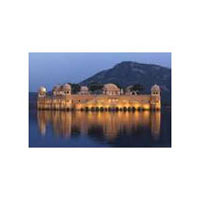 7D/6N
7D/6N
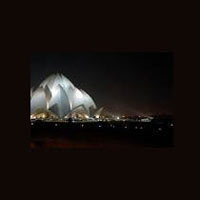 6D/5N
6D/5N
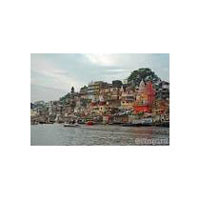 9D/8N
9D/8N
Bodhgaya - Nalanda - Rajgir - Patna - Vaishali - Sravasti - Varanasi - Kapilvastu -..
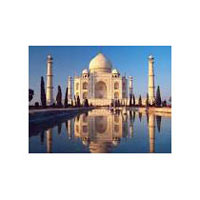 10D/9N
10D/9N
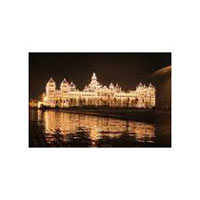 7D/6N
7D/6N
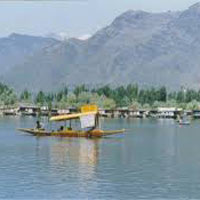 6D/5N
6D/5N
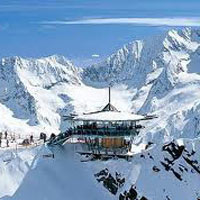 5D/4N
5D/4N
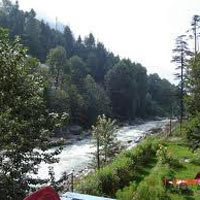 12D/11N
12D/11N
New Delhi - Shimla - Manali - Amritsar - Dharamshala - Chandigarh City
 7D/6N
7D/6N
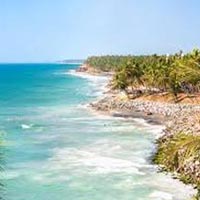 25D/24N
25D/24N
Chennai - Mahabalipuram - Thanjavur - Kumbakonam - Tiruchirappalli - Madurai - Rame..
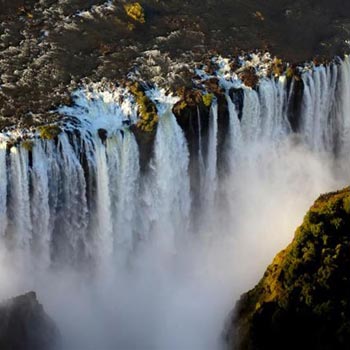 25D/24N
25D/24N
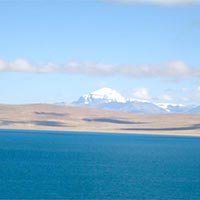 25D/24N
25D/24N
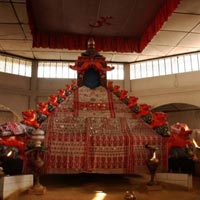 25D/24N
25D/24N
 25D/24N
25D/24N
Mumbai - Nashik - Varanasi - Bijapur - Badami - Hampi - Hassan - Mysore - Mettupala..
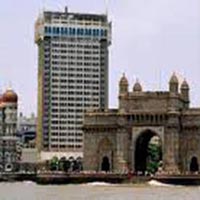 25D/24N
25D/24N
Mumbai - Nashik - Varanasi - Bijapur - Badami - Hampi - Hassan - Mysore - Mettupala..
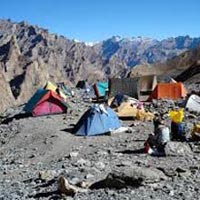 25D/24N
25D/24N
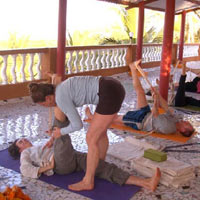 25D/24N
25D/24N
Rejuvenation and Meditation Tour
Chennai - Mahabalipuram - Thanjavur - Trichy - Madurai - Rameshwaram - Kovalam
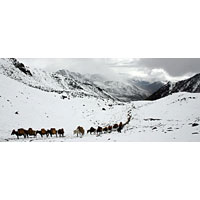 25D/24N
25D/24N
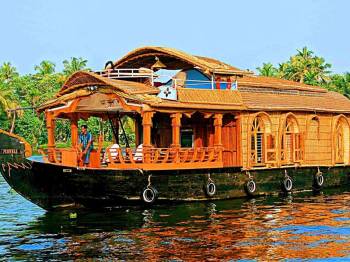 5D/4N
5D/4N
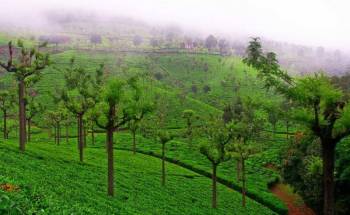 13D/12N
13D/12N
Tamil Nadu Tour Package 12 Night - 13 Days
Coimbatore - Coonoor - Kanyakumari - Kodaikanal - Madurai - Ooty - Rameshwaram
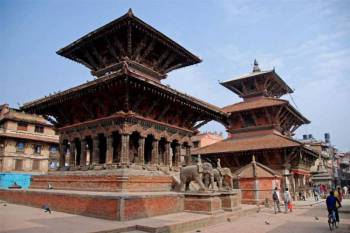 12D/11N
12D/11N
11 Nights - 12 Days Nepal Tour Package - 2
Prayagraj - Gorakhpur - Varanasi - Ayodhya - Kathmandu - Pokhara - Chitwan - janakpur
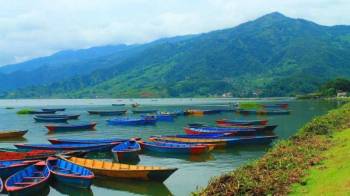 12D/11N
12D/11N
11 Nights - 12 Days Nepal Tour From Gora..
Prayagraj - Gorakhpur - Varanasi - Ayodhya - Kathmandu - Pokhara - Chitwan - janakpur
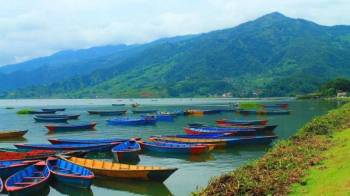 12D/11N
12D/11N
11 Nights - 12 Days Nepal Tour From Gora..
Prayagraj - Gorakhpur - Varanasi - Ayodhya - Kathmandu - Pokhara - Chitwan - janakpur
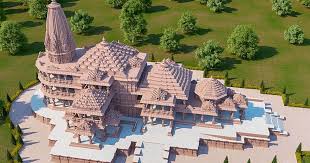 12D/11N
12D/11N
Prayagraj - Varanasi - Bodhgaya - Ayodhya - Pokhara - Chitwan - Parsa
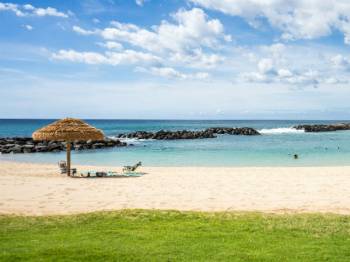 11D/10N
11D/10N
Kerala Tour Package 10 Nights - 11 Days
Kochi - Kovalam - Thekkady - Thiruvananthapuram - Alleppey - Kanyakumari - Munnar
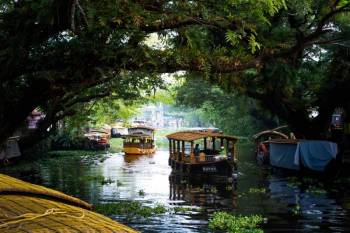 11D/10N
11D/10N
10 Night Kerala Tour Package From Cochin
Kochi - Kovalam - Thekkady - Alleppey - Trivandrum - Kanyakumari - Munnar
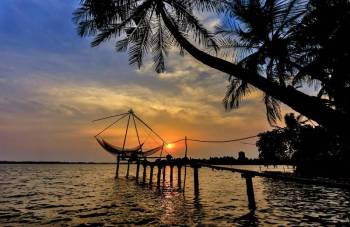 11D/10N
11D/10N
10 Nights - 11 Days Kerala Tour Package
Kochi - Kovalam - Thekkady - Alleppey - Trivandrum - Kanyakumari - Munnar